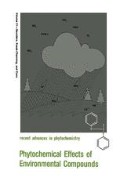Abstract
The application of municipal sewage sludge to agricultural land has become an established practice in the United States, especially in areas adjacent to major metropolitan centers.1 The U.S. Environmental Protection Agency (EPA) established guidelines for regulating the application of sludge materials on farmlands in the 1970s.2 However, several agricultural experiment stations in the highly urbanized northeastern states, including Maryland, have established their own guidelines for the disposal of sewage sludge on crop lands.1–3 The primary factors which limit the quantities of sludge that may be applied to an area are the amounts of heavy metals present in a given sludge and the nutrient requirements of the crops being grown.1,2 The N and P requirements of the crop generally limit the quantity of sludge that can be applied in a given year and the amount of heavy metals applied to soils are commonly used to establish lifetime loading limits.1–8,10,13,14
Access this chapter
Tax calculation will be finalised at checkout
Purchases are for personal use only
Preview
Unable to display preview. Download preview PDF.
References
FRINK, C.R., T.L. HULLAR. 1984. Criteria on recommendations for land application of sludges in the northeast Pennsylvania State University. Penn. Agric. Exp. Sta. Bull. 851, p. 94.
U.S. ENVIRONMENTAL PROTECTION AGENCY. 1979. Criteria for classification of solid waste disposal facilities and practices. Federal Register 44 (179): 55438–53464.
BELL, P.F. 1986. M.S. Thesis. Residual effects from land applied sewage sludge on the agronomic, chemical and physical properties of Maryland tobacco. University of Maryland, College Park, Maryland.
COUNCIL FOR AGRICULTURE, SCIENCE AND TECHNOLOGY.Effects of sewage sludge on the cadmium and zinc content of crops. Council for Agric. Sci. Tech. No. 83, Ames, Iowa, p. 7.
CHANEY, R.L., P.M. GIORDANO. 1977. Microelements as related to plant deficiencies and toxicities. In Soils for Management of Organic Waste and Waste Waters. (L.F. Elliott and F.J. Stevenson, eds.), Amer. Soc. Agron., Madison, Wisconsin, pp. 234–279.
HECKMAN, J. 1985. M.S. Thesis. Effect of sewage sludge on soybean heavy metal accumulation and symbiotic nitrogen fixation. University of Maryland, College Park, Maryland.
SOMMERS, L.E. 1977. Chemical compositions of sewage sludges and analysis of their potential use as fertilizers. J. Environ. Qual. 6: 225–232.
SOON, Y.K., T.E. BATES, J.R. MOYER. 1980. Land application of chemically treated sewage sludge: III. Effects on soil and plant heavy metal content. J. Environ. Qual. 9: 497–504.
CHANEY, R.L., S.B. STERRETT, M.C. MORELLA, C.A. LLOYD, 1982. Effect of sludge quality and rate, soil pH and lime on heavy metal residues in leafy vegetables. In Proceedings of the Fifth Annual Madison Conference on Applied Research Practice on Municipal and Industrial Waste, University of Wisconsin, Madison, Wisconsin, pp. 444–458.
COREY, R.B., R. FUJII, L.L. HENDRICKSON. 1981.Bioavailability of heavy metals in soil-sludge systems. In Proceedings of the Fourth Annual Madison Conference on Applied Research Practice on Municipal and Industrial Waste, University of Wisconsin, Madison, Wisconsin, pp. 449–465.
BAKER, D.E., A.M. WOLF. 1984. Cadmium. In Criteria on Recommendations for Land Application of Sludges in the Northeast. (C.R. Frink, T.I. Hullar, eds.), Pennsylvania State University, Penn. Agric. Exp. Sta. Bull. 851, pp. 43–49.
DEAN, R.B., M.J. SUESS. 1985. The risk to health of chemicals in sewage sludge applied to land. Waste Man. Res. 3: 251–278.
ELINDER, C.-G., T. KJELLSTROM, C. FRIBOG, B. LIND,L. LINNMAN. 1976. Cadmium in kidney cortex, liver and pancreas from Swedish amtopsies. Arch. Environ. Health 23: 292–302.
MACLEAN, A.J. 1976. Cadmium in different plant pecies and its availability in soils as influenced by organic matter and additions of lime, phosphorus, cadmium, and zinc. Can. J. Soil Sci. 56: 129–138.
Author information
Authors and Affiliations
Editor information
Editors and Affiliations
Rights and permissions
Copyright information
© 1987 Plenum Press, New York
About this chapter
Cite this chapter
Mulchi, C.L., Bell, P.F., Adamu, C., Heckman, J.R. (1987). Bioavailability of Heavy Metals in Sludge-Amended Soils Ten Years after Treatment. In: Saunders, J.A., Kosak-Channing, L., Conn, E.E. (eds) Phytochemical Effects of Environmental Compounds. Recent Advances in Phytochemistry, vol 21. Springer, Boston, MA. https://doi.org/10.1007/978-1-4613-1931-3_9
Download citation
DOI: https://doi.org/10.1007/978-1-4613-1931-3_9
Publisher Name: Springer, Boston, MA
Print ISBN: 978-1-4612-9073-5
Online ISBN: 978-1-4613-1931-3
eBook Packages: Springer Book Archive

